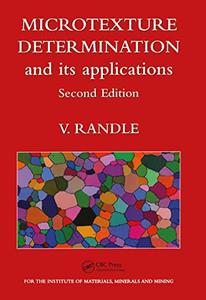
Free Download Valerie Randle, "Microtexture Determination and Its Applications"
English | 2003 | ISBN: 1902653831, 190654011X, 0901716359 | PDF | pages: 147 | 4.5 mb
A cornerstone in the study of both natural and technological materials is characterisation of microstructure. In the widest sense this topic encompasses, for all phases present: morphology, including size and shape distributions; chemical composition; crystallographic parameters, including orientation and orientation relationships. A landmark advance for the materials community occurred with the genesis of 'microtexture', which for the first time provided integration of crystallographic parameters and other aspects of the microstructure. A definition of microtexture is: 'a population of crystallographic orientations whose individual components are linked to their location within the microstructure.' The term microtexture also describes any experimental technique used to determine this information. Essentially, a stationary beam of electrons is diffracted by atomic planes in the sampled volume of specimen. Analysis of the resulting diffraction pattern provides crystallographic information which can be related back to its position of origin.An estimated 95 percent of microtexture determination is by 'electron backscatter diffraction' (EBSD) in a scanning electron microscope (SEM), with the remaining 5 percent contributed mainly by transmission electron microscopy (TEM) counterparts to EBSD. Evaluation (indexing) of EBSD diffraction patterns and output of data in a variety of formats is in most cases fully automated. The most exciting EBSD output is an 'orientation map', which is a quantitative depiction of the microstructure in terms of its orientation constituents. Microtexture determination is now firmly established as the most comprehensive experimental tool for quantitative characterisation and analysis of microstructure, and is used extensively in both research and industry. Much has changed since this book was first published and the second edition has been completely rewritten to reflect these changes.
